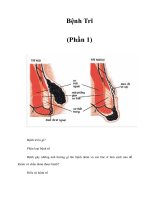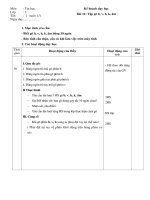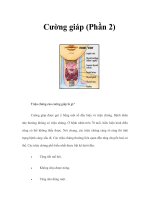Tài liệu Water desalination - Phần 3 doc
Bạn đang xem bản rút gọn của tài liệu. Xem và tải ngay bản đầy đủ của tài liệu tại đây (532.59 KB, 23 trang )
54
4
Implementation
The Roadmap notes that it is a “living document,” that will continue to evolve and
improve with time. The Roadmap’s focus is to present “broad research areas that are
representative of the types of scientific and technical advances that will be necessary for
desalination and water purification technologies to find wide acceptance” (USBR and
SNL, 2003). Section 5.0 of the Roadmap, entitled “Next Steps,” positions the Roadmap
at the upper end of a continuum of parallel activities to build additional water supplies
through desalination and membrane-based water purification (Figure 4-1). While the
Roadmap recognizes the broader steps necessary for wider application of desalination,
including characterizing the resources, addressing regulatory issues, improving global
collaboration, and addressing issues of commercialization and facility siting, the
Roadmap does not provide an implementation strategy for its own research agenda.
IMPLEMENTATION STEPS
Much remains to be done to build on the efforts to date and turn these preliminary
research ideas into a program for strategic research investments in the area of
desalination technologies. In order to achieve the objectives of the Roadmap, the
program will need adequate funding for research, involvement of talented scientific
researchers worldwide, strategic awarding of research funding, and effective
communication of the research findings to the desalination community. These necessary
implementation steps and the roles of various agencies in these steps are described below.
Funding Implementation of the Roadmap
As noted in Chapter 1, past federal investments (pre-1982) in desalination research
were substantial and resulted in large improvements in efficiency and the development of
reverse osmosis technology. Current funding levels within the federal government for
non-military application of desalination, however, are insufficient, if one key objective of
the Roadmap is to fund research efforts that would trigger a step change in performance
and cost reduction for desalination technologies. Research investments in desalination by
the private sector, supplemented by modest current federal support, gradually continue to
Copyright © National Academy of Sciences. All rights reserved.
Review of the Desalination and Water Purification Technology Roadmap
/>Implementation 55
FIGURE 4-1 The steps identified in the Roadmap to advance the wider use of desalination.
SOURCE: USBR and SNL, 2003.
improve the efficiency of desalination technologies and reduce overall costs; however, in
order to achieve the far-reaching objectives presented in the Roadmap, adequate funding
must be applied and distributed. Advancements in critical areas without strong
commercial interests, such as concentrate disposal, will likely depend upon public
financing.
This committee was not tasked to determine how much additional funding would be
needed to significantly reduce the costs of desalination, and the Roadmap also did not
address this issue. More thorough analysis is needed to estimate the research funding
needed, beyond current industry investments in research and development, to place the
nation in a likely position to reach the long-term objectives set forth in the Roadmap. As
currently structured, the Roadmap does not contain sufficient justification for the research
areas identified, and it contains no prioritization of the research presented. As noted in
Chapter 2, a subsequent strategic desalination research agenda should be developed,
which is founded upon a baseline assessment of the state of today’s desalination
technologies and identifies research areas most likely to reach the Roadmap’s specific
critical objectives (perhaps expanding on the ideas presented in Chapter 3). An analysis
to provide estimated cost ranges—irrespective of funding source—to achieve each
objective should be a natural outgrowth of the development of a strategic desalination
research agenda. This analysis should include an assessment of current research
activities in desalination, and it should also provide guidance on opportunities for shared
funding responsibilities between federal agencies, research foundations or institutions,
and the public sector, since cost-sharing can be an effective means to leverage limited
research dollars. The Bureau of Reclamation, based on its long history of research
funding in this area, should work collaboratively with desalination experts from these
different sectors and industry (perhaps including key participants from the Roadmapping
Team) to develop this subsequent research agenda and conduct the research cost analysis.
Copyright © National Academy of Sciences. All rights reserved.
Review of the Desalination and Water Purification Technology Roadmap
/>56 Review of the Desalination and Water Purification Technology Roadmap
Step changes in technology are difficult to predict—let alone implement—and will
require substantial investments in areas of great promise but sizeable uncertainty.
Because this funding must be applied wisely, a strategic investment approach is needed
that selects research topics and projects based on their potential for improving current
technologies or developing revolutionary new technologies. A decision will need to be
made on whether the Roadmap research agenda can include feasibility studies and pilot
and demonstration plants or whether it should be used mainly to support research.
Broad Request for Proposals
Based on available funding, the opportunity to announce requests for proposals exists
for federal agencies, such as the Bureau of Reclamation or the National Science
Foundation, or other research institutions that explicitly target one or more Roadmap
objectives. The principal funding agency should announce a request for proposals as
widely as possible to scientists and engineers in municipal and federal government,
academia and private industry. These requests for proposals could also be disseminated
in a central website on desalination research, described below. At present, the
desalination community is relatively small, but collectively there is a great deal of
expertise across the world. International desalination experts and others from related
areas of research should be encouraged and given the opportunity to offer innovative
research ideas that have the potential to significantly advance the field. Thus, the request
for proposals should extend to federal agencies, national laboratories, other research
institutions, utilities, and the private sector. Since innovation cannot be pre-assigned,
there should also be room for unsolicited proposals.
Selection
To achieve the objectives of the Roadmap, proposals should be selected through a
rigorous independent peer review process (NRC, 2002b) irrespective of the agency
issuing the request for proposals. A rotating panel of independent reviewers should be
appointed based on their relevant expertise in the focal areas of the Roadmap and in the
basic science of desalination. The process should allow for the consideration and review
of unsolicited proposals, as long as their research goals meet the objectives of the
Roadmap. Proposal funding should be based on the quality of the proposed work, the
potential contribution toward meeting the Roadmap’s critical objectives, prior evidence
of successful research, and the potential for effective publication or dissemination of the
research findings. The status of each request for proposal process could be monitored
through the proposed website suggested below.
Communicating the Activities and Results of Research and Development
Scientific and technical breakthroughs and improvements will need to be transferred
effectively to the desalination industry before they can be broadly adopted. The Bureau
of Reclamation should encourage and lead the publication and communication of
Copyright © National Academy of Sciences. All rights reserved.
Review of the Desalination and Water Purification Technology Roadmap
/>Implementation 57
research activities and results, through various media. The following components should
be considered:
• A central website on the activities and progress of the Roadmap could enhance
coordination and collaboration while disseminating both research opportunities and
research findings to the broader desalination community. This website could also
provide a means to communicate with the general public and help interested parties
understand what level of advancement exists for a particular desalination technology.
Examples of information that should be incorporated into the website include:
- Requests for proposals issued,
- Proposals received,
- Descriptions of projects awarded,
- Interim and final project reports,
- Resulting publications,
- Synthesized information on resulting advances in the technology,
- Progress reports on the Roadmap, including what progress has been achieved
in meeting the performance targets,
- Periodic updates to the desalination technology strategic research agenda at
specific intervals (e.g., every five years), and
- Recent data on water demands and supply around the nation, and details on
the role of desalination to meet water demands.
Based on its long history in desalination research, the Bureau of Reclamation should
help coordinate this website (perhaps with assistance from other research
institutions).
• Effective research communication requires clear dissemination of the research
results to both the scientific community and those practitioners who will ultimately
utilize the findings. Scientific communication includes publication in peer-reviewed
journals, books, and presentations at scientific meetings. Clear communication of the
scalability of research findings is important because this can facilitate rapid adoption
of technological improvements at the appropriate step in their development (e.g.,
those that are scalable to full production). The Bureau of Reclamation should
consider holding periodic meetings among Roadmap-funded researchers to enhance
cross-fertilization of knowledge and improve communication.
• Public Perception. Without public acceptance, there will be no mandate to fund
research in the areas identified. Therefore, it is important to inform the general
public about the benefits, affordability, and environmental considerations of
desalination. Desalination’s place in the supply of water for drinking, industrial, and
agricultural use should be demonstrated. Steps should be taken to provide this
information to both the general public and policy makers through various media.
Copyright © National Academy of Sciences. All rights reserved.
Review of the Desalination and Water Purification Technology Roadmap
/>58 Review of the Desalination and Water Purification Technology Roadmap
CONCLUSIONS AND RECOMMENDATIONS
Conclusion: Current funding levels within the federal government for non-military
application of desalination are insufficient to fund research efforts that would trigger a
step change in performance and cost reduction for desalination technologies.
Recommendation: In order to achieve the far-reaching objectives presented in the
Roadmap, adequate research funding should be applied and distributed.
Conclusion: The Roadmap does not provide an implementation strategy, and much
remains to be done to turn these preliminary research ideas into a program for strategic
research investments in the area of desalination technologies.
Recommendations:
• The Bureau of Reclamation should work collaboratively with desalination
experts from different sectors to develop a strategic research agenda and to
estimate the resources needed to place the nation in a likely position to reach the
long-term objectives set forth in the Roadmap.
• Requests for proposals should be announced as widely as possible to scientists
and engineers in government, academia, and private industry, and unsolicited
proposals should also be considered in areas of innovative technologies.
• Proposals should be selected through a rigorous independent peer review process,
utilizing a rotating panel of independent expert reviewers.
• The Bureau of Reclamation should encourage and lead the publication and
communication of research activities and results through various media,
including a central website on the activities and progress of the Roadmap.
• The general public should be informed about the benefits, affordability, and
environmental considerations of desalination.
Copyright © National Academy of Sciences. All rights reserved.
Review of the Desalination and Water Purification Technology Roadmap
/>59
References
AMTA (American Membrane Technology Association). 2001a. Desalting Facts: How
Much Does Desalted Water Cost? [Online]. Available: branes-
amta.org/media/pdf/desaltingcost.pdf. [2003, October 28].
AMTA (American Membrane Technology Association). 2001b. Desalting Facts: Is
Desalted Water Reliable? [Online]. Available: branes-
amta.org/media/pdf/reliable.pdf. [2003, October 28].
Andrews, W.T., W.F. Pergande and G. McTaggarat. 2001. Energy Performance
Enhancement of 950 m
3
/d Seawater Reverse Osmosis Unit in Grand Cayman.
Desalination 135: 195-204.
AWWA (American Water Works Association). 1999. Water Quality & Treatment. 5
th
Edition. New York, NY: McGraw-Hill.
AwwaRF (American Water Works Association Research Foundation). 2000.
AWWARF/USBR Membrane Workshop, Denver, CO. United States Department
of the Interior (Bureau of Reclamation).
Belfort, G., R.H. Davis, and A. Zydney. 1994. The Behavior of Suspensions and
Macromolecular Solutions in Crossflow Microfiltration. Journal of Membrane
Science 96: 1-58.
Borman, S. 2001. Probe for Prions. Chemical and Engineering News. 79:9.
Buros, O.K. 2000. ABCs of Desalting. International Desalination Association.
[Online]. Available: />[2003, December 19].
Crohn, D.M., and M.V. Yates. 1997. Interpreting Negative Virus Results from Highly
Treated Water. Journal of Environmental Engineering 123(5): 423-430.
Daughton, C.G. 2003. Cradle-to-Cradle Stewardship of Drugs for Minimizing Their
Environmental Disposition while Protecting Human Health, Part II: Drug
Disposal, Waste Reduction, and Future Direction. Environmental Health
Perspective. [Online]. Prepublication available:
[2003, October 28].
De Leon, R., P. Hacker, and P.A. Rochelle. 2002. Development of Stringent
Verification Procedures for Molecular Detection of Enteric Viruses in Water. In
Proceedings of the American Water Works Association, Water Quality
Technology Conference. Denver, CO: American Water Works Association.
Copyright © National Academy of Sciences. All rights reserved.
Review of the Desalination and Water Purification Technology Roadmap
/>60 Review of the Desalination and Water Purification Technology Roadmap
Drewes, J.E., T. Heberer, and K. Redderson. 2001. Removal of Pharmaceuticals During
Conventional Wastewater Treatment, Advanced Membrane Treatment and Soil
Aquifer Treatment. Proceedings of the National Groundwater Association, 2
nd
International Conference on Pharmaceuticals and Endocrine Disrupting
Chemicals in Water, October 9-11, 2001, Minneapolis, Minnesota. Westerville,
OH: National Groundwater Association.
EPA (United States Environmental Protection Agency). 2002. 2002 Edition of the
Drinking Water Standards and Health Advisories. [Online]. Available:
[2003,
October 28].
Evans, R.H. 1969. Operation of Sea Water Distillation Plants. Journal of the American
Water Works Association 61: 663-666.
Faust, S.F. and O.M. Aly. 1998. Chemistry of Water Treatment. Ann Arbor, MI: Ann
Arbor Press, Inc.
Gagliardo, P., and H. Mallia. 2003. Sewer Mining in Urban Melbourne. In Proceedings
of the Water Reuse & Desalination Conference, Suntec, Singapore, 25-26
February 2003. Topsfield, MA: International Desalination Association.
Gleick, P.H. 2000. The World’s Water 2000-2001: The Bienniel Report on Freshwater
Resources. Washington, DC: Island Press.
Gleick, P.H. 2003. Global Freshwater Resources: Soft-Path Solutions for the 21
st
Century. Science 302: 1524-1528.
Glueckstern, P., M. Priel and M. Wilf. 2002. Field Evaluation of Capillary UF
Technology as a Pretreatment for Large Seawater RO Systems. Desalination 47:
55-62.
Green, F.B., T.J. Lundquist, N.W.T. Quinn, M.A. Zarate, I.X. Zubieta, and W.J. Oswald.
2003. Selenium and Nitrate Removal from Agricultural Drainage Using
AIWPS® Technology. Water Science and Technology, Vol. 48: 299-305.
Heberer, T., D. Feldman, K. Redderson, H. Altmann, and T. Zimmermann. 2001.
Removal of Pharmaceutical Residues and Other Persistent Organics from
Municipal Sewage and Surface Waters Applying Membrane Filtration.
Proceedings of the National Groundwater Association, 2
nd
International
Conference on Pharmaceuticals and Endocrine Disrupting Chemicals in Water,
October 9-11, 2001, Minneapolis, MN. Westerville, OH: National Groundwater
Association.
Koelzer, V.A. 1972. Desalting. Arlington, VA: National Water Commission.
Langlois, G.W., B.M. Jones, R.H. Sakaji, and C.G. Daughton. 1984. Quantitation of
Carbon in Oil Shale Process Wastewaters: Coulometry Coupled with UV-
Peroxydisulfate and High-Temperature Oxidation. American Society for Testing
and Materials, Journal of Testing and Evaluation 12 (4): 227-237.
Lauer, W.C. and S.E. Rogers. 1998. The Demonstration of Direct Potable Water Reuse:
Denver’s Landmark Project. In Asano, T. (ed.). Wastewater Reclamation and
Reuse. Lancaster, PA: Technomic Publishing Company.
Lee, E.K. and W.J. Koros. 2002. Membranes, Synthetic, Applications. In Meyers, R.A.
(ed.). Encyclopedia of Physical Science and Technology. 3rd Edition. New
York, NY: Academic Press.
Ludwig, H. 2003. Hybrid Systems in Seawater Desalination — Practical Design
Aspects, Status and Development Perspectives. Desalination 157: 31–32.
Manem, J., and R. Sanderson. 1996. Membrane Bioreactors in Water Treatment
Membrane Processes. American Water Works Research Foundation. New York,
NY: McGraw-Hill.
Copyright © National Academy of Sciences. All rights reserved.
Review of the Desalination and Water Purification Technology Roadmap
/>References 61
Mielke, J.E. 1999. Desalination R&D: The New Federal Program. Congressional
Research Service Report for Congress. [Online]. Available:
/>34.cfm?&CFID=10727500&CFTOKEN=95713209. [2003, October 28].
Mills, W.R., S.M. Bradford, M. Rigby, and M.P. Wehner. 1998. Groundwater Recharge
at the Orange County Water District. In Asano, T. (ed.). Wastewater
Reclamation and Reuse. Lancaster, PA: Technomic Publishing Company.
National Research Council (NRC). 1987. The Mono Basin Ecosystem: Effects of
Changing Lake Level. Washington, DC: The National Academies Press.
NRC. 1998. Issues in Potable Reuse: The Viability of Augmenting Drinking Water
Supplies with Reclaimed Water. Washington, DC: The National Academies
Press.
NRC. 1999. Hormonally Active Agents in the Environment. Washington, DC: The
National Academies Press.
NRC. 2001a. Classifying Drinking Water Contaminants for Regulatory Consideration.
Washington, DC: The National Academies Press.
NRC. 2001b. Envisioning the Agenda for Water Resources Research in the Twenty-
First Century. Washington, DC: The National Academies Press.
NRC. 2001c. Aquifer Storage and Recovery in the Comprehensive Everglades
Restoration Plan. Washington, DC: The National Academies Press.
NRC. 2002a. Regional Issues in Aquifer Storage and Recovery for Everglades
Restoration. Washington, DC: The National Academies Press.
NRC. 2002b. Review Procedures for Water Resources Project Planning. Washington,
DC: The National Academies Press.
NRC. 2003. Letter Report on the Review of the Desalination and Water Purification
Technology Roadmap. Washington, DC: The National Academies Press.
NWRI (National Water Research Institute). 2003. Seawater Desalination: Opportunities
and Challenges. Workshop Report. Fountain Valley, CA: National Water
Research Institute.
Nieminski, E.C., F.W. Schaefer, and J.E. Ongerth. 1995. Comparison of Two Methods
for Detection of Giardia Cysts and Cryptosporidium oocysts in Water. Applied
and Environmental Microbiology 61:1714-1719.
Olivieri, A.W., D.M. Eisenberg, J.A. Soller, R.E. Danielson, R.C. Cooper, and P.F.
Gagliardo. 1998. Microbial Challenge Studies at the Aqua 2000 Research
Center. In the Proceedings of the Water Reuse 1998 Conference, February 1-4.
Denver, CO: American Water Works Association and Water Environment
Federation.
Pankratz, T. and J. Tonner. 2003. Desalination.com. Houston, TX: Lone Oak
Publishing.
Rittman, B.E. 1998. Opportunities with Membrane Bioreactors. In the Proceedings of
the International Conference on Microfiltration II. San Diego, CA.
Sakaji, R.H., R.H. Hultquist, A. Olivieri, R.R. Trusell, J. Soller, and J. Crook. 1998.
Whither the Multiple Barrier? American Water Works Association and Water
Environment Federation, Water Reuse 98 Symposium, Orlando, FL, February 1-
3, 1998.
Seah, H. 2003. Singapore’s Experience in Water Reuse. In the Proceedings of the
Water Reuse & Desalination Conference, Suntec, Singapore, 25-26 February
2003. Topsfield, MA: International Desalination Association.
SNL (Sandia National Laboratories). 2002. U.S. Bureau of Reclamation Report to
Congress: Tularosa Basin National Desalination Research Facility Study.
Copyright © National Academy of Sciences. All rights reserved.
Review of the Desalination and Water Purification Technology Roadmap
/>62 Review of the Desalination and Water Purification Technology Roadmap
[Online]. Available:
[2003, October 29].
Sedlak, D.L., and K.E. Pinkston. 2001. Factors Affecting the Concentrations of
Pharmaceuticals Released to the Aquatic Environment. Proceedings of the
National Groundwater Association, 2
nd
International Conference on
Pharmaceuticals and Endocrine Disrupting Chemicals in Water, October 9-11,
2001, Minneapolis, MN. Westerville, OH: National Groundwater Association.
Sloss, E., D.F. McCaffrey, R.D. Fricker, S.A. Geschwind, and B.R. Ritz. 1999.
Groundwater Recharge with Reclaimed Water Birth Outcomes in Los Angeles
County, 1982-1993. Santa Monica, CA: RAND Corporation.
Strathmann, H. 1992. Electrodialysis. In Ho, W.S. and K.K. Sirkar. (eds.). Membrane
Handbook. New York, NY: van Nostrand Reinhold.
Taylor, J. and E. Jacobs. 1996. Reverse Osmosis and Nanofiltration. In Mallevialle, J.,
P.E. Odendaal and M.R. Wiesner. (eds.). Water Treatment Membrane Processes.
New York, NY: McGraw-Hill.
Tchobanoglous, G. 2003. The Strategic Importance of Decentralized Wastewater
Management in the Twenty-First Century. In the Proceedings of the Water
Reuse & Desalination Conference, Suntec, Singapore, 25-26 February 2003.
Topsfield, MA: International Desalination Association.
TGPC (Texas Groundwater Protection Committee). 2003. Texas Groundwater
Protection Strategy AS-188. Texas Commission on Environmental Quality.
[Online]. Available:
[2003, December 30].
USBR (United States Bureau of Reclamation). 2003a. Desalting Handbook for Planners.
3
rd
Edition. Desalination and Water Purification Research and Development
Report #72. Denver, CO: United States Department of the Interior, Bureau of
Reclamation, Water Treatment Engineering and Research Group.
USBR. 2003b. Desalnet. [Online]. Available:
[2003, October 28].
USBR and SNL (United States Bureau of Reclamation and Sandia National
Laboratories). 2003. Desalination and Water Purification Technology Roadmap:
A Report of the Executive Committee. Desalination & Water Purification
Research & Development Report #95. Denver, CO: United States Department
of the Interior, Bureau of Reclamation, Water Treatment and Engineering Group.
U.S. Congress Committee on Appropriations. 2001. Energy and Water Development
Appropriation Bill, 2001. 107
th
Congress, 1
st
session, senate report 107-039.
United States Filter Corporation. 1998. Water Maps. [Online]. Available:
[2003, November 6].
Wangnick, K. 2002. 2002 IDA Worldwide Desalting Plants Inventory. Report No. 17.
Gnarrenburg, Germany: Wangnick Consulting GMBH.
WHO (World Health Organization). 1984. Guidelines for Drinking-Water Quality. 1st
Edition. Geneva, Switzerland: World Health Organization.
Wilf, M. and K. Klinko. 1997. Effect of New Pretreatment Methods and Improved
Membrane Performance on Design of RO Seawater Systems. In the Proceedings
of the IDA World Congress on Desalination and Water Reuse, October 1997,
Madrid, Spain, Vol 1, pp: 357 – 372.
Copyright © National Academy of Sciences. All rights reserved.
Review of the Desalination and Water Purification Technology Roadmap
/>









